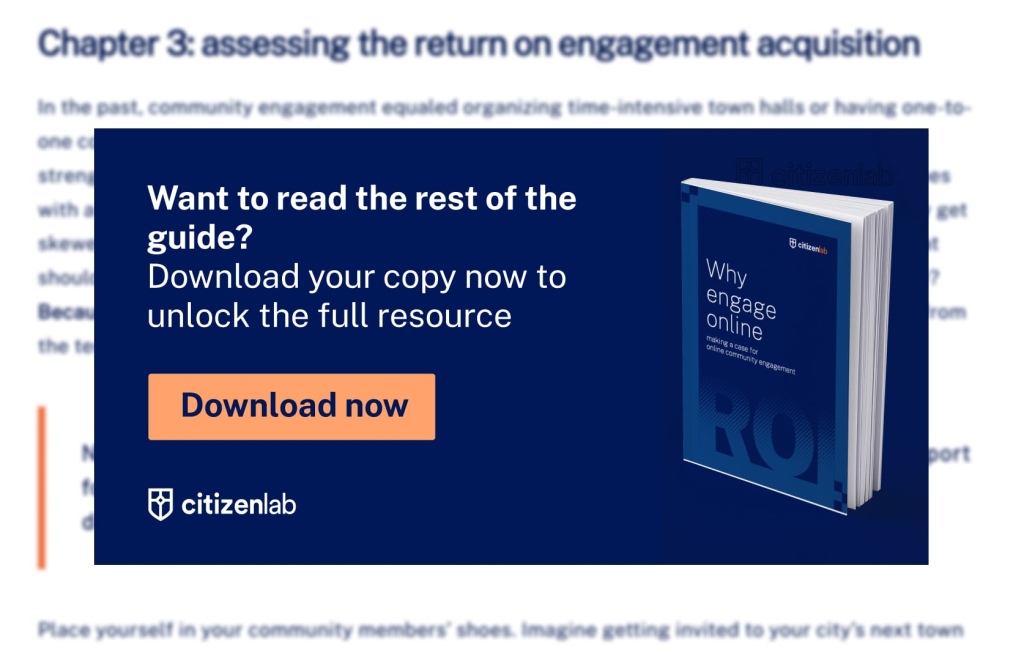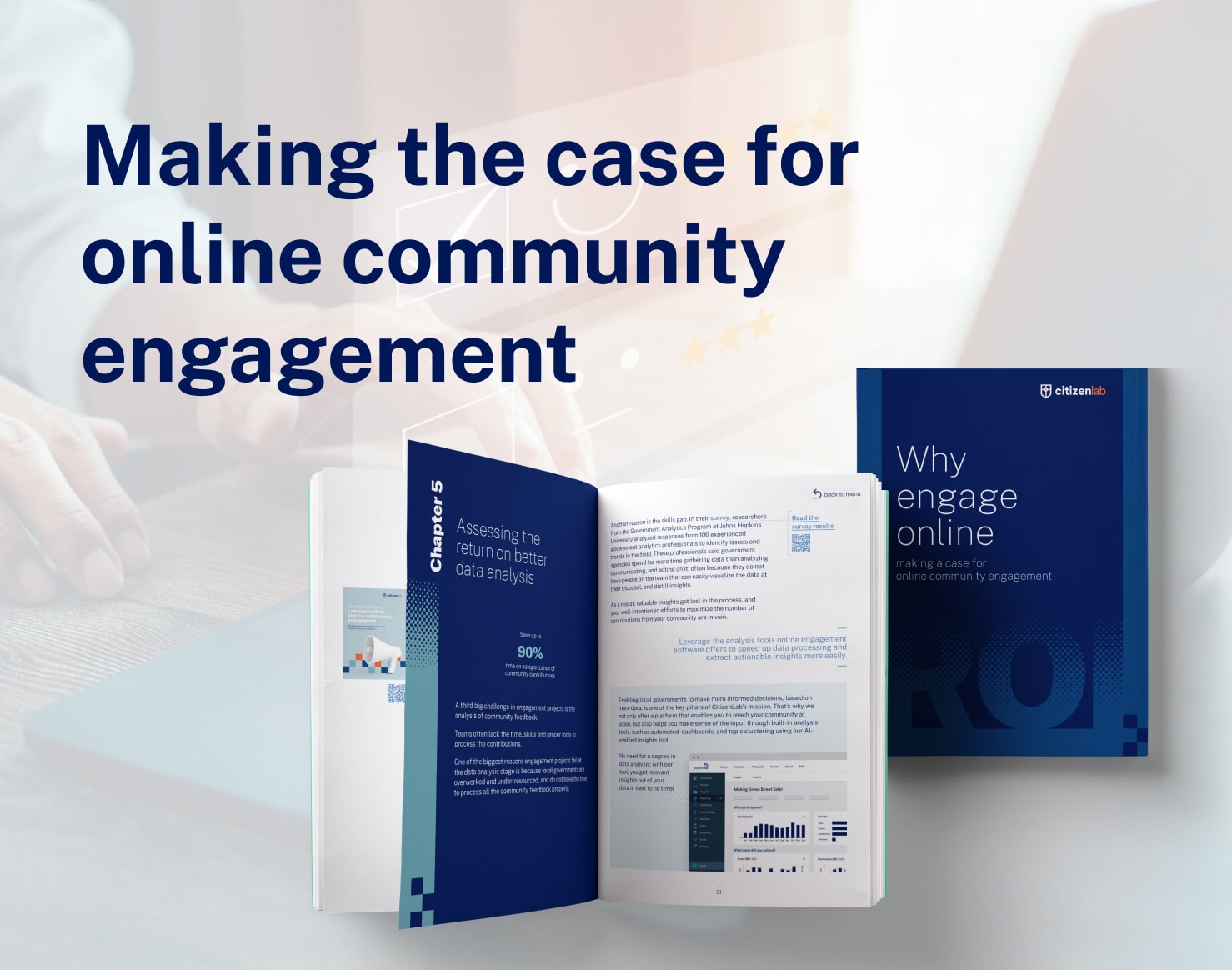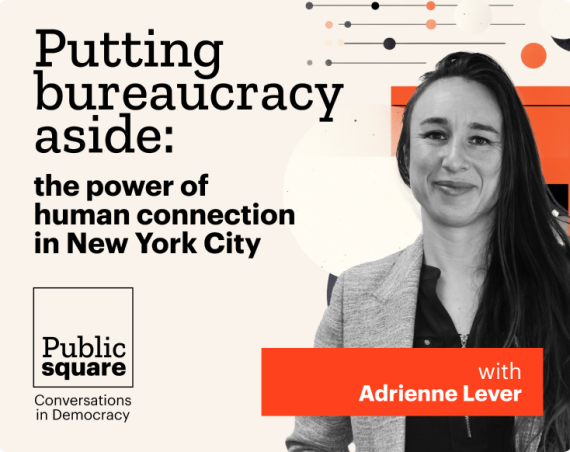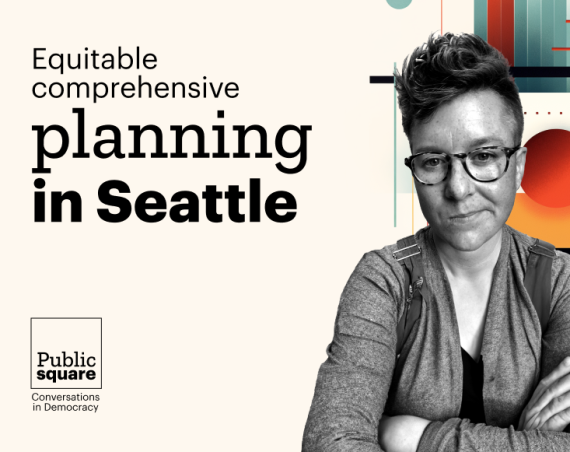The biggest, lingering fear in the back of many public servants’ minds is whether there is value in investing in online community engagement. What is the return on investment (ROI) you make? Why should your city start or continue investing in digital participation? And if you want an online component to your engagement efforts, why not just use social media?
This document will show you why online community engagement is indeed worth it. In this guide, you’ll discover:
- Section 1
1. What is ROI, and should we calculate it?
2. Why calculating the exact return of community engagement is not a walk in the park
- Section 2
Chapter 1: what is ROI, and should we calculate it?
What is ROI?
Return on investment is a way of determining the efficiency of an investment. In other words, ROI is used to decide where to invest an organization’s limited resources to use them best. Local governments should (in theory), like any other organization, allocate their resources to the fields which generate the highest long-term ROI.
ROI can be calculated with the following formula:
ROI = (gain – cost)/cost) * 100
In recent years, governments have been under increased scrutiny on how they spend public funds. With more and more households confronted with the increasing cost of living, it’s understandable that community members and their representatives in local government are also increasingly conscious about how they spend tax revenues.
Benefits are not easy to quantify
The costs of online community engagement are relatively easy to figure out. In contrast, calculating benefits and their exact value can be tricky because they are not all easily expressed in numbers. After all, we might be able to tell you how many of your community members participated in a project, or an index might tell you something about their satisfaction with your decisions, but what are they worth? Can we put a price tag on concepts such as trust, and satisfaction?
Chapter 2: why calculating the exact return of community engagement is not a walk in the park
Formula with different variables
Predicting the return of community engagement, whether it’s happening online or offline, will never be an exact science. It depends on too many factors for that to be the case, such as the number of projects you want to launch, available resources in terms of human capital and finances, and your community’s general feeling towards and willingness to engage in your participation efforts. All of these factors can play a role in the success, and ultimately evaluation of the investment. Context is everything.
Dependent on your goals
Moreover, it’s key to realize that the return cannot be assessed in the same way for every city, project, or platform. You need to take into account the impact goals you have set for yourself, such as increased participation from youth or engaging a certain percentage of your community on a specific project, and how this can influence the way you run future engagement projects.
A better relationship between residents and their local governments has tangible, positive, and long-lasting effects worth investing in. In the next section, we will discuss how digital engagement adoption presents efficiencies and mitigates risks associated with everyday government duties, creating a substantial return on investment.
At CitizenLab, we care about the success of your community engagement efforts and work together towards your goals. No matter where you are in your engagement journey, we are active partners and provide personal onboarding, dedicated support, and peer learning from a growing network of governments and organizations around the world.






